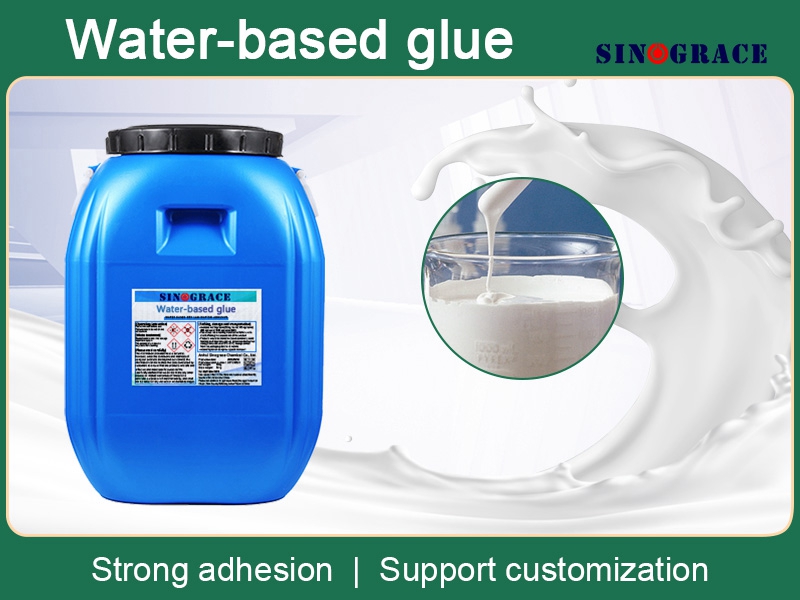Клеи на водной основе для более надежного склеивания
Клеи на водной основе являются отличной альтернативой системам на основе растворителей, поскольку они не содержат летучих органических соединений (ЛОС), легче по весу и, как правило, требуют меньшего количества продукта для образования прочного соединения.
По сравнению с другими решениями, клеевые системы на водной основе экологически безопасны, имеют низкое содержание летучих органических соединений и более удобны для пользователя. Использование клеев на водной основе не требует такого количества мер безопасности, как системы, содержащие растворители, что может повысить эффективность в зависимости от характера проекта. Кроме того, готовые изделия, склеенные с помощью клеев на водной основе, удобны в использовании: клеи на водной основе не представляют большого риска для здоровья и не выделяют токсичных или неприятных запахов.
Типы клеевых систем на водной основе
Тенденция к клеям на водной основе. Клеевые системы на водной основе можно условно разделить на две категории: эмульсионные, дисперсионные клеи и растворные клеи.
01 Водный клей
Клей на основе раствора — это наиболее традиционная форма клеевой системы на водной основе. Они используют воду в качестве вещества-носителя и затвердевают по мере испарения воды. Эти клеи на водной основе производятся с использованием натуральных и синтетических полимеров, растворяющихся в воде. Эти клеевые системы на водной основе используются для изготовления клеев для бумаги и смачиваемых клеев, например тех, которые используются в конвертах, марках и этикетках.
Нанесение: валиком, распылением и валиком
Склеивание: Мокрое склеивание
Примеры: клеи на основе крахмала/декстрина для бумажной промышленности, например, в переплете книг, и белково-казеиновые клеи для пищевой упаковочной промышленности.
02 Водоэмульсионный и дисперсионный клей
Клей на водной основе в основном используется для ламинирования с пищевой упаковкой. Водные клейкие эмульсии и дисперсионные системы представляют собой многофазные смеси, состоящие из жидких или твердых полимерных фаз, диспергированных в водной фазе. Эти адгезивы на водной основе могут быть сделаны с использованием различных полимеров, включая PVA (винилацетатный полимер), PVAC (винилацетат-сополимер) и акриловой кислоты, а также синтетические эластомеры, такие как PUR (полиуретан). .
Как и другие клеевые клеев, дисперсионные клеев и эмульсии также могут быть очищены водой. Тем не менее, после того, как клей на водной основе высыхает, он больше не диспергирован с водой, а чистящие остатки могут потребовать использования растворителей и чистящих средств.
Метод строительства: Спрей, щетка, рулон или мяч.
Связь: влажная связь или сухость (контактный клей на основе на водной основе)
Примеры: винилацетатные клеи для склеивания бумаги, дерева и картона, резиновые латексные клеи на водной основе для тканей и дерева. Полиакрилатные эмульсии в качестве строительных клеев на водной основе, клеи для ламината, чувствительные к давлению клеи на водной основе и полиуретановые клеи на водной основе в качестве дисперсий и эмульсий для упаковочной и обувной промышленности.
Метод склеивания клеем на водной основе
Другой способ классификации клеев на водной основе заключается в том, как они образуют связь. Эти две группы представляют собой мокрое склеивание и сухое склеивание (контактные клеи на водной основе).
01 Клей на водной основе для мокрого склеивания
Мокрая склейка Клеи на водной основеК ним относятся те, которые отверждаются путем испарения, и включают дисперсионные системы и эмульсионные системы, а также клеи на водной основе, которые преимущественно склеиваются во влажном состоянии. В этом процессе склеивания клей на водной основе наносится либо на один клей, либо на два клея. Клеи встречаются друг с другом, когда клей не высох, поэтому это называется мокрым склеиванием. Поскольку испарение является результатом отверждения, чрезвычайно важно иметь хотя бы один клей, который является пористым, впитывает влагу и позволяет ей быстрее покинуть клеевую систему на водной основе. Если ни один из клеев не является пористым, отверждение и затвердевание могут занять длительное время. Клеевые системы на водной основе с мокрым склеиванием в основном используются в процессах ламинирования бумаги и упаковки, а также в производстве мебели и матрасов.
02 Контактный клей
Также известен как «сухое склеивание» клеи на водной основе, в основном эмульсии и дисперсионные клеев. Подобно дисперсиям на основе растворителей, для обоих кледей подходят клеевые клеев на водной основе, поэтому требуется подложка для склеивания, и вода может испаряться до того, как между клеями будет образована связь. Связь происходит, когда детали, покрытые клей на водной основе, вступают в контакт друг с другом.
Контактные клеев на водной основе используются более широко, чем системы влажных связей, потому что они, как правило, более сильнее, позволяют получить большее разнообразие субстратов и имеют лучшую термостойкость. В этих клейких смесях на водной основе ингредиенты могут быть добавлены, чтобы улучшить и создать свойства, включая пожарную стойкость, химическую устойчивость и антистатические свойства.
<00


 русский
русский English
English français
français español
español العربية
العربية





